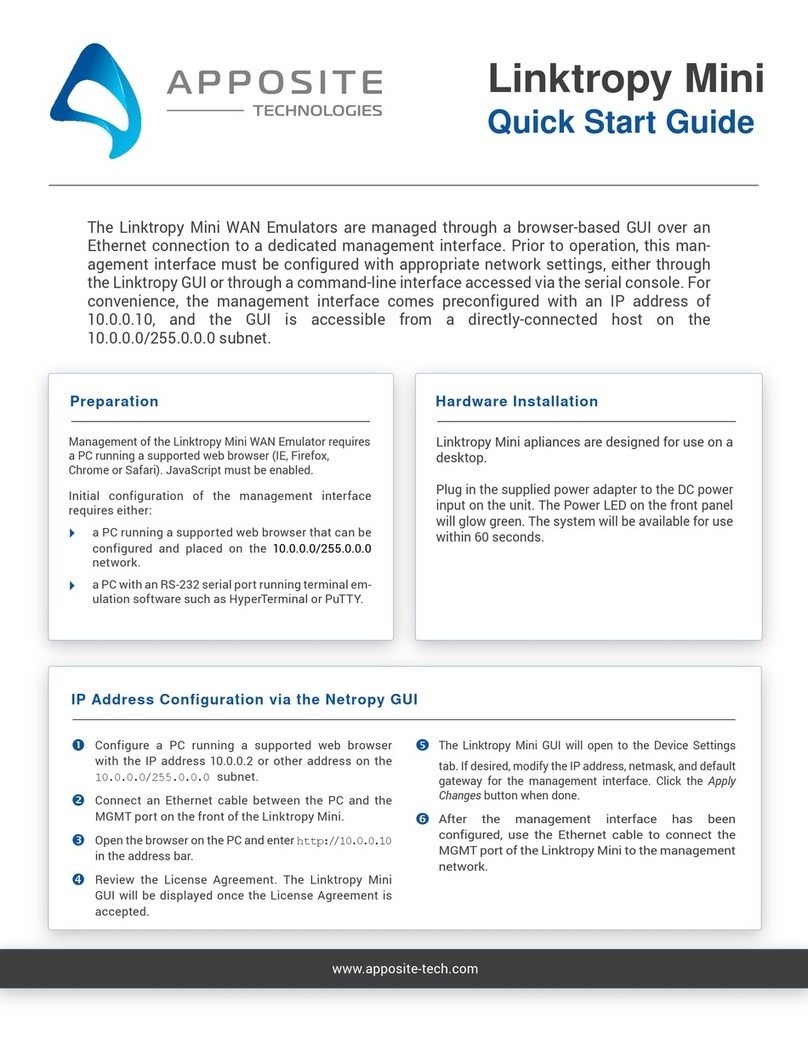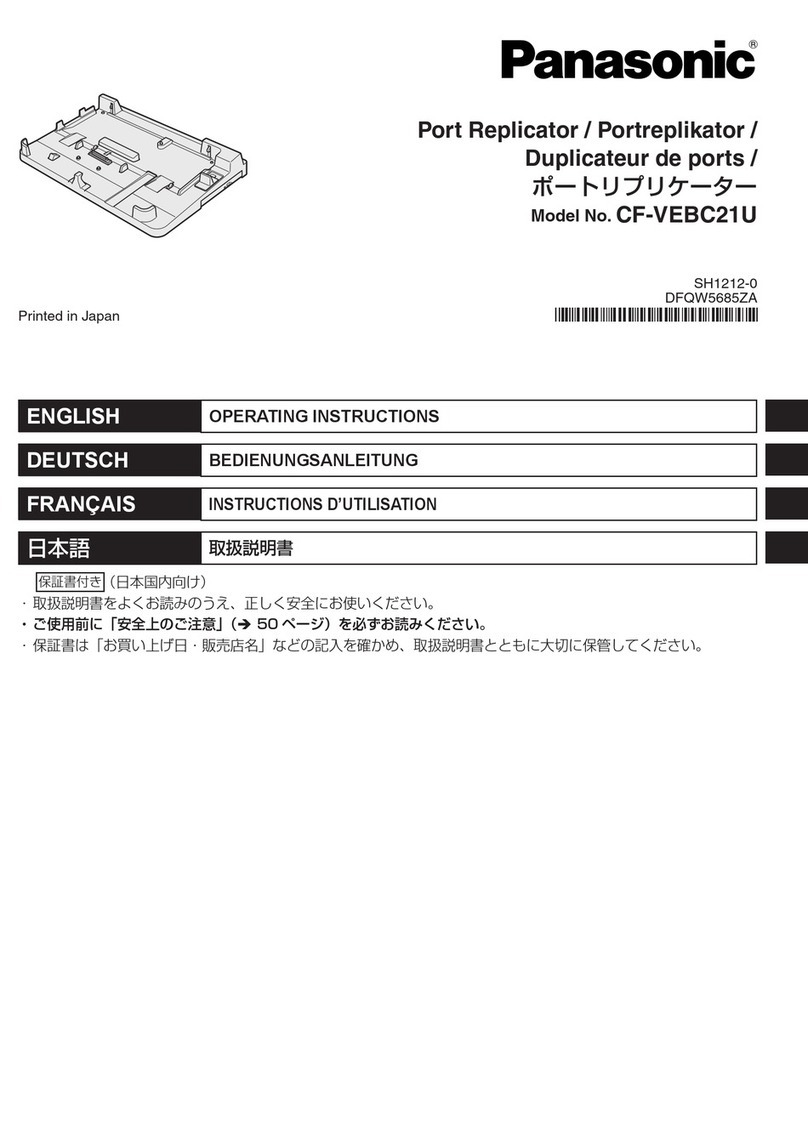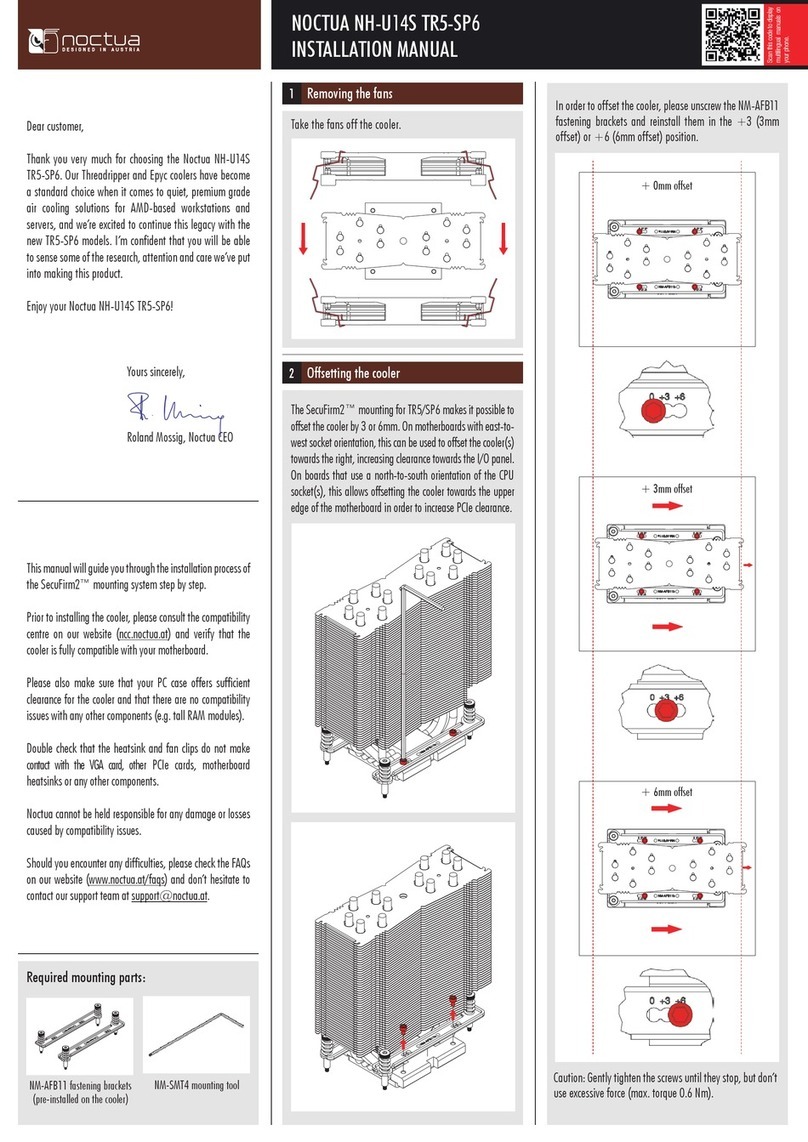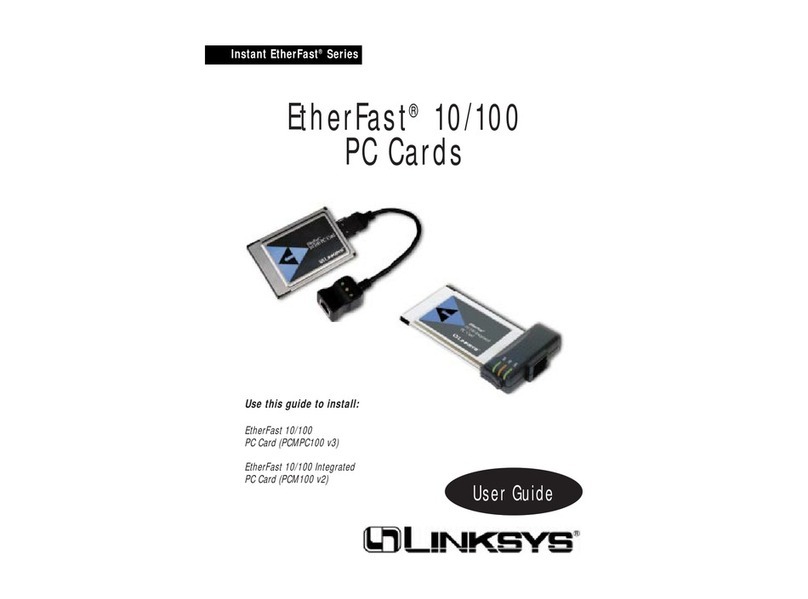Teleste BRILLANTE User manual

BRILLANTE
User Manual
Teleste Corporation
BRILLANTE
High Speed Data Processor

BRILLANTE User Manual, 59300023, rev005 Contents •i
CH-MV 11-03-2005
Contents
Introduction 3
General.....................................................................................................................................................3
Features....................................................................................................................................................3
Installation 5
Mechanical Installation and Connections.................................................................................................5
Establishing a Data Connection 6
General.....................................................................................................................................................6
Login........................................................................................................................................................6
ETHERNET connections.........................................................................................................................7
Static Routes.............................................................................................................................................8
Rebooting.................................................................................................................................................9
Command Prompt ..................................................................................................................................10
BRILLANTE commands.........................................................................................................10
Password protected commands:...............................................................................................11
Configuring the BRILLANTE 12
Editing the main configuration file.........................................................................................................12
BRILLANTE configuration file sections...............................................................................................12
<HEADER>.............................................................................................................................12
<BRILLANTE>.......................................................................................................................12
<ECMG_LIST>.......................................................................................................................13
<SERVICES>..........................................................................................................................13
<SERVICEGROUPS>.............................................................................................................14
<ECMSTREAMS>..................................................................................................................14
<EMMG_LIST>......................................................................................................................15
<EMMSTREAMS>.................................................................................................................15
<EMMFORWARD>................................................................................................................15
Example configuration, bril.conf............................................................................................................16
Editing the SIGEN configuration file.....................................................................................................17
SIGEN configuration file sections..........................................................................................................17
<HEADER>.............................................................................................................................17
<SERVER_LIST> ...................................................................................................................17
<TDT>.....................................................................................................................................17
<TOT>.....................................................................................................................................18
<CA_DESCRIPTORS>...........................................................................................................18
<CA_SECTION>.....................................................................................................................19
<CAT>.....................................................................................................................................19
Example configuration, si.conf...............................................................................................................20
Monitoring the BRILLANTE 21
Main CONTROL console menu.............................................................................................................21
Available commands:...............................................................................................................21
Built in features:.......................................................................................................................22

BRILLANTE User Manual, 59300023, rev005 Contents •ii
CH-MV 11-03-2005
SCS console menu..................................................................................................................................22
Available commands:...............................................................................................................22
EMM console menu...............................................................................................................................22
Available commands:...............................................................................................................22
SIGEN console menu.............................................................................................................................23
Available commands:...............................................................................................................23
Spare ECMG in brief 24
Overview................................................................................................................................................24
Configuration .........................................................................................................................................24
BRILLANTE 1+1 backup in brief 26
Fail-over switching.................................................................................................................................26
Configuration .........................................................................................................................................26
Configuration File..................................................................................................................................27
Triggers..................................................................................................................................................29
ATM.........................................................................................................................................29
ECMG......................................................................................................................................29
Application crash .....................................................................................................................29
Ethernet....................................................................................................................................29
Power loss................................................................................................................................29
HW failure ...............................................................................................................................29
Other tips................................................................................................................................................30
Legal Declarations 31
Copyright Acknowledgements...............................................................................................................31
Trademark Acknowledgements..............................................................................................................31

BRILLANTE User Manual, 59300023, rev005 Introduction •3
Introduction
General
BRILLANTE is an IBMTM xSeries 306 server running LinuxTM
operating system. It comes along with third party ATM card
inside. BRILLANTE is used as an interface unit between third
party Conditional Access System and Teleste ATMuxTM
system.
The primary task of BRILLANTE is to take care of the
communication between the ECM generators, EMM/PD
(private data) injectors and Teleste ATMuxTM system. This
includes establishing and maintaining the connection to ECM-
generators and EMM/PD injectors as well as the processing of
ECM- and EMM-streams. BRILLANTE is also performing
ECM and Control Word synchronisation over the ATM to the
built-in Scrambler units located in the LEGATO ATM DVB
Processor.
BRILLANTE is compatible with the DVB simulcrypt v2.0
standard.
This manual applies the software version 2.1.2 but is mostly
applicable also with the earlier versions discarding the missing
functions.
Features
• Establishes and maintains connections to ECM generators
• Accepts and maintains connections from EMM generators

BRILLANTE User Manual, 59300023, rev005 Introduction •4
• Accepts and maintains connections from Private data
generators
• ECM, EMM and PD stream processing
• Control Word generator
• ECM and Control Word synchronisation and sharing to the
Scrambler units
• Insertion of EMM and PD data grams into DVB transport
stream over ATM
• EMM stream sharing from main head-end to sub head-ends
over the Ethernet
• Provides time synchronization using external/internal NTP
server
• TDT/TOT/CAT table insertion
• ECM generator connection backup and automatic switching
• Automatic 1+1 full backup and automatic unit switching
• DVB simulcrypt v2.0 compatibility
• Supports up to three CA systems per service (simulcrypted)
• Open CAS support
• Provides a simple way of handling Pay Per View services
internally

BRILLANTE User Manual, 59300023, rev005 Installation •5
Installation
Mechanical Installation and
Connections
• Install the BRILLANTE into a 19” cabinet and ensure
sufficient cooling by installing passive ventilation units
above and below it.
• Connect a monitor and a standard PC-keyboard to the
connectors on the rear panel connectors.
• Connect Ethernet cable(s) to the back panel RJ-45
connector “1” (and 2) and an ATM cable to the ATM card
connector (RJ-45) on the backside of the unit. The ATM
cable is connected to the VIVACE or PRESTO depending
on the ATMuxTM system configuration.
• Connect the supplied mains plug between the rear panel
connector and a 230 VAC wall outlet. For more detailed
instructions refer to the IBMTM user manual.
• Power up the BRILLANTE and see that the indicators on
the front panel of the unit are lit.
• Proceed by establishing the Ethernet connection through the
TCP/IP network by filling in the required parameters as
described in the next chapter.

BRILLANTE User Manual, 59300023, rev005 Establishing a Data Connection •6
Establishing a Data Connection
General
BRILLANTE runs on LinuxTM and starts automatically when
powered on. IP-configuration must be done first to connect it
to the ATMuxTM system through the TCP/IP network.
Login
After powering up the initial display will prompt for
a “BRILLANTE login”; enter:
system and password system
or
admin and password admin
(Depending on which user level you wish to log in.)

BRILLANTE User Manual, 59300023, rev005 Establishing a Data Connection •7
ETHERNET connections
To configure the Ethernet connections requires the user to log
in as an “admin” (previous page). All the settings of Ethernet
connections can be edited by using BRILLANTE configurator
script (cfgrtr.sh) or by editing system files directly as shown
below.
Initiate the Ethernet 1 connection by entering:
pico -w ifcfg-eth0
Note! On the back panel the eth0 connector is marked as “1” and the eth1
connector is marked “2”Atleast one ETHERNET interface must be
connected.
The PICO text editor opens and the display will show the
following lines:
From the above confirm that the “#BOOTPROTO=dhcp” line
has the “#” in the beginning and that the “ONBOOT=yes” line
states “yes”. Then enter appropriate IPADDR (Brillante),
DEVICE=eth0
#BOOTPROTO=dhcp
ONBOOT=yes
IPADDR=xx.x.x.xx
NETMASK=xxx.xxx.xxx.x
GATEWAY=xx.x.x.xx

BRILLANTE User Manual, 59300023, rev005 Establishing a Data Connection •8
NETMASK and GATEWAY addresses depending on the
configuration.
When ready press simultaneously the keys “Ctrl” and “X”,
answer “Y” (yes) and save the new configuration by pressing
“enter” (…writing 6 lines).
Now you will see the command prompt
“[admin@Brillante admin]$”. Continue with commands;
ifdown eth0 (closes the old eth0 connection on port 1)
ifup eth0 (the new settings takes effect)
If both of Ethernet ports (1 & 2) on the BRILLANTE’s back
panel are in use proceed by entering:
pico -w ifcfg-eth1
Continue as in the case of eth0.
Static Routes
To configure the static routes requires the user to log in as an
“admin”.
When the Ethernet connection(s) are reconfigured and static
routes are needed to go through eth0 continue by entering:
pico –w route-eth0
Edit file in PICO text editor. The file may be empty but you
need to populate it with your static routes for that device
depending on your current network configuration.
The format of adding new routes is
network/netmask-bits via gateway
network The network you want to get access to.
netmask-bits Defines the subnet mask, Uses bitmask
definition, i.e. in example 24 bits means the
# example route
192.168.0.0/24 via 152.3.182.5

BRILLANTE User Manual, 59300023, rev005 Establishing a Data Connection •9
subnet mask 255.255.255.0 correspondingly
16 bits would define the mask 255.255.0.0
via Mandatory key word.
gateway Address of your router to the network.
If also eth1 needs static routes then type:
pico -w route-eth1
Continue as in the case of eth0.
***************************************************
Following lines of static-routes below has been left here for
old compatibility reasons and is not applicable with the
IBM hardware but only with the older DELL hardware.
When the ETHERNET connection(s) are reconfigured,
continue by entering:
pico –w static-routes
Edit file in PICO text editor. The file may be empty but you
need to add the following lines depending on the current
network configuration.
where:
net = network
netmask = subnet mask
gw = gateway or router
***************************************************
Rebooting
Reboot by entering:
reboot
Confirm by typing your own user password
system or admin (same as you entered when logging in)
eth0 net xxx.xxx.xx.x netmask xxx.xxx.xx.x gw xxx.xxx.xx.x
eth1 net xxx.xxx.xx.x netmask xxx.xxx.xx.x gw xxx.xxx.xx.x

BRILLANTE User Manual, 59300023, rev005 Establishing a Data Connection •10
The device reboots and it will take few minutes.
Login as system or admin again to proceed.
At this point the Ethernet connections with the new
configurations should be up and running. The connections with
PRESTO / VIVACE and the CAS can be verified by using the
ping command.
ping xxx.xxx.xx.x (IP address to verify)
In a case of no reply, check the Ethernet connection cables and
the IP configuration and then reboot.
If a reply is received you are ready to proceed.
Command Prompt
monitor Starts the BRILLANTE monitor application.
bril BRILLANTE Main Menu, start/stop/restart
application processes.
brilstart Starts all processes of BRILLANTE application.
Processes are running in background.
brilkill Kills all BRILLANTE application processes.
brilrestart First kills all processes and then restarts them to
background.
sig SI Generator Menu, start/stop/restart sigen process.
redundance.sh
BRILLANTE 1+1 redundancy script to control
main and backup units, for more details refer to the
‘BRILLANTE 1+1 backup in brief ’ -section in this document.
cfgrtr.sh Brillante configurator menu. Edit and handle some
basic settings.
ppvrun Run BRILLANTE Pay Per View extension (refer to
the Pay Per View User Manual).
ifconfig Displays the status of the currently active
interfaces.
route Show / Manipulate the IP routing table, for more
details type man route
BRILLANTE
commands

BRILLANTE User Manual, 59300023, rev005 Establishing a Data Connection •11
ifup Causes the interface to be activated.
ifdown Causes the driver for this interface to be shut down.
mount Mount a file system, for more details type man
mount
umount Unmount file systems, for more details type man
umount
date Print or set the system date and time, for more
details type man date
sonetdiag The SONET diagnostic tool can be used to monitor
link performance and to simulate errors. In order to
get current SONET statistics, run it with the ATM
interface number as the argument, e.g. in case of
BRILLANTE sonetdiag 0
NOTE! BRILLANTE starts the application processes automatically when
booting up.
reboot Reboots the BRILLANTE.
poweroff Halts the BRILLANTE so that power can be safely
turned off.
NOTE! Poweroff command has to be used always when shutting down
BRILLANTE.
Password protected
commands:

BRILLANTE User Manual, 59300023, rev005 Configuring the BRILLANTE •12
Configuring the BRILLANTE
Editing the main configuration file
Next the configuration file must be edited. Enter the editor by
typing:
pico –w bril.conf
See the example of configuration file further in this document.
BRILLANTE configuration file
sections
There is a detailed description below about each section found
in configuration file (bril.conf). A tabulator separates each field
on a line. Fill in and edit the required parameters.
Lines marked with the character ‘#’ are comment lines and
doesn’t have any affect on configuration. Comment lines can be
used as many as needed to add configuration related
information.
syntax_version Version of configuration file format. Do
not change!
scs_pool Address and port of BRILLANTE scs
application process. Normally processes
are run in local host and there is no need
to change the default.
emm_relay Address and port of BRILLANTE emm
relay application process. Normally
processes are run in local host and there
is no need to change the default.
sigen Address and port of BRILLANTE si
generator application process. Normally
<HEADER>
<BRILLANTE>

BRILLANTE User Manual, 59300023, rev005 Configuring the BRILLANTE •13
processes are run in local host and there
is no need to change the default.
ECMG Name User defined name of an ECM generator.
If the same name is used more than once
then the ECMG pool is created and all
the ECM streams will be shared to that
pool. The pool has a capability for load
balancing. However all the ECM
generators included in the pool shall be
identical because ECM streams will be
allocated automatically between ECMGs.
SuperCASID 32-bit identifier formed by the
concatenation of the CA system id (16
bit) and the CA subsystem id (16 bit). It
shall identify uniquely a (set of)
ECMG(s).
ChannelID 16-bit identifier which is allocated by the
SCS (user) and uniquely identifies an
ECM channel across all connected
ECMGs.
DefaultCP Indicates the default Crypto period for
the particular ECMG.
IPaddr:Port IP address and port of the ECMG where
BRILLANTE will connect.
streams@10sec Maximum number of ECM streams
supported by an ECMG on a channel
during the crypto period time.
Sc_ver 8-bit field identifying the simulcrypt
protocol version used. It shall have the
value 1 or 2.
Spare ECMG Name of the ECMG which shall be used
as a backup connection. This name has to
be defined earlier in the <ECMG_LIST>
otherwise an error will be reported. If
there is not backup ECMG used then this
value shall be ‘-‘ (dash). For more details refer
to the ‘Spare ECMG in brief ’-section in this document.
Service Name User defined name of the service for
which the ECM stream is used. No
duplicate names are allowed.
TSID Transport Stream ID, no need to
configure, reserved for future.
<ECMG_LIST>
<SERVICES>

BRILLANTE User Manual, 59300023, rev005 Configuring the BRILLANTE •14
Service ID Reserved for future, however no
duplicate values may exist (use ‘-‘ dash if
you are unsure)
Component ID Reserved for future, use always ‘*’
asterisk character.
Elem. PID(s) Reserved for future, however no
duplicate values may exist (use ‘-‘ dash if
you are unsure)
Legato IP:Scrambler ID IP address and the scrambler ID
of the Legato which will apply the ECM
stream and scrambles services using
received ECM data.
Group Name User defined name of the group for
which the ECM stream is used. Several
services can be combined to one group.
Service Name Name of the service to be included in the
group. This name has to be defined in
<SERVICES> section otherwise an error
will be reported.
Service/Group Name Name of the service or group
which will apply the provided ECM data.
This name has to be defined either in
<SERVICES> or <SERVICEGROUPS>
section otherwise an error will be
reported.
ECMG Name Name of the ECM generator which
provides ECM streams. This name has to
be defined in <ECMG_LIST> section
otherwise an error will be reported.
ECM ID 16-bit identifier which is allocated by the
head-end and uniquely identifies an ECM
stream for a Super CAS id.
Initial AC Access Criteria contains CA system
specific information of undefined length
and format, needed by the ECMG to
build an ECM.
CP(sec) This parameter indicates the actual
duration of a particular Crypto period for
a particular stream. This setting overrides
the default CP of corresponding ECM
generator configured in <ECMG_LIST>.
Initial Scrambling Initial state to indicate if the service shall
be scrambled or unscrambled by default.
<SERVICEGROUPS>
<ECMSTREAMS>

BRILLANTE User Manual, 59300023, rev005 Configuring the BRILLANTE •15
The unscrambled status is supported only
by the Legatos which has simulcrypt key
activated.
EMMG Name User defined name of an EMM or Private
Data generator. No duplicate names are
allowed in list.
Client ID 32-bit identifier which shall identify
uniquely each EMMG/PDG across all the
EMMGs/PDGs connected. In the case of
EMMs or other CA related data, the two
first bytes of the client id should be equal
to the two first bytes of the corresponding
CA system id.
EMMG Name Name of the EMM/PD generator which
provides EMM/PD streams. This name
has to be defined in <EMMG_LIST>
section otherwise an error will be
reported.
Data ID 16-bit identifier which is allocated by the
CAS and uniquely identifies an
EMM/private data stream of a given
client id.
Vpi Virtual path identifier which shall be
configured to Legato to accept incoming
EMM data.
Vci Virtual channel identifier which shall be
configured to Legato to accept incoming
EMM data.
Pid Protocol identifier which shall be
configured to Legato to accept incoming
EMM data.
Bitrate This parameter is used to indicate the
requested bit rate or the allocated bit rate
respectively.
Name User defined name of another
BRILLANTE located in sub-headend. No
duplicate names are allowed.
IPaddr:Port IP address and port of the sub-headend
BRILLANTE where the data shall be
forwarded.
<EMMG_LIST>
<EMMSTREAMS>
<EMMFORWARD>

BRILLANTE User Manual, 59300023, rev005 Configuring the BRILLANTE •16
Example configuration, bril.conf
#
# Example BRILLANTE configuration
# file name: /teleste/etc/bril.conf
#
<HEADER>
syntax_version 2.3.0
</HEADER>
<BRILLANTE>
scs_pool 127.0.0.1:5010
emm_relay 127.0.0.1:5020
sigen 127.0.0.1:5555
</BRILLANTE>
<ECMG_LIST>
# ECMG Name SuperCASID ChannelID DefaultCP IPaddr:Port streams@10sec Sc_ver Spare ECMG
SPARE 0x0A001234 0 10 10.2.14.4:1100 20 1 -
x1_ECMG 0x0A001234 0 10 10.2.14.4:1000 20 1 SPARE
x2_ECMG 0x070900AB 1 10 10.2.14.2:2000 50 2 -
</ECMG_LIST>
<SERVICES>
# Service Name TSID Service ID Component ID Elem. PID(s) Legato IP:Scrambler ID
S1 1 101 * 101 10.14.1.2:1
S2 2 102 * 102 10.14.1.2:2
S3 * 103 * 103 10.14.1.2:3
S4 3 104 * 104 10.14.1.2:4
S5 * 105 * 105 10.14.1.2:5
</SERVICES>
<SERVICEGROUPS>
# Group Name Service Name
G1 S2
* S3
G2 S4
* S5
</SERVICEGROUPS>
<ECMSTREAMS>
# Service/Group Name ECMG Name ECM ID Initial AC CP(sec) Initial Scrambling
S1 x1_ECMG 1 0x10000010 * 1
* x2_ECMG 2 0x07090001010101 * *
G1 x1_ECMG 11 0x20000020 * on
G2 x1_ECMG 12 0x30000030 * on
</ECMSTREAMS>
<EMMG_LIST>
# EMMG name Client ID
x1_EMMG 0x0A001234
x2_EMMG 0x070900AB
</EMMG_LIST>
<EMMSTREAMS>
# EMMG name Data ID Vpi Vci Pid Bitrate (kbits/s)
x1_EMMG 0x0001 1 99 99 150
x2_EMMG 0x0003 1 100 100 150
</EMMSTREAMS>
<EMMFORWARD>
# Name IPaddr:Port
Bril@Subheadend 10.136.0.16:5000
</EMMFORWARD>

BRILLANTE User Manual, 59300023, rev005 Configuring the BRILLANTE •17
Editing the SIGEN configuration file
If the PSI/SI Insertion is activated then the SIGEN
configuration file must be edited. Enter the editing mode by
typing:
pico –w si.conf
See the example of configuration file further in this document.
SIGEN configuration file sections
There is a detailed description below about each section found
in configuration file (si.conf). A tabulator separates each field
on a line. Fill in and edit the required parameters.
Lines marked with the character ‘#’ are comment lines and
doesn’t have any affect on configuration. Comment lines can be
used as many as needed to add configuration related
information.
syntax_version Version of configuration file format. Do
not change!
Server Name User defined name of a server process
(brilemm) which receives the data. No
duplicate names are allowed in list.
IPaddr:Port IP address and port of the where the data
shall be sent.
Client ID 32-bit identifier which shall identify
uniquely each EMMG/PDG across all the
EMMGs/PDGs connected. In the case of
EMMs or other CA related data, the two
first bytes of the client id should be equal
to the two first bytes of the corresponding
CA system id.
Data Channel ID 16-bit identifier which uniquely identifies
a Private Data channel within a client ID.
This value is allocated by the user.
Server Name Name of the server where the data will be
sent. This name has to be defined in
<SERVER_LIST> section otherwise an
error will be reported.
<HEADER>
<SERVER_LIST>
<TDT>

BRILLANTE User Manual, 59300023, rev005 Configuring the BRILLANTE •18
repetition_rate Represents the period in milliseconds for
the repetition of data. Valid range:
1000…30000.
Data_ID 16-bit identifier which uniquely identifies
a private data stream of a given client id.
This value is allocated by the user.
Data_Stream_ID 16-bit identifier which uniquely identifies
a private data stream within a channel.
This value is allocated by the user.
Server Name Name of the server where the data will be
sent. This name has to be defined in
<SERVER_LIST> section otherwise an
error will be reported.
repetition_rate Represents the period in milliseconds for
the repetition of data. Valid range:
1000…30000.
Data_ID 16-bit identifier which uniquely identifies
a private data stream of a given client id.
This value is allocated by the user.
Data_Stream_ID 16-bit identifier which uniquely identifies
a private data stream within a channel.
This value is allocated by the user.
Country_ID Identifies a country using the 3-character
code as specified in ISO 3166.
Country_Region_ID Identifies on which time zone table is
used if several time zones are found in
the same country. ‘0’ - no time zone
extension used, ‘1’- most easterly region
and so on…
Desc_Name User defined name of a CA descriptor.
No duplicate names allowed.
CA_System_ID 16-bit identifier indicating the type of CA
system applicable for the associated
EMM streams. Refer to the first two bytes
of client id in <EMMG_LIST> section in
bril.conf.
CA_PID The PID value of the Transport Stream
packets which contains the EMM
information for the CA systems as
specified with the associated
CA_System_ID. Valid range: 0…8191.
Refer to the pid value in
<EMMSTREAMS> section in bril.conf.
<TOT>
<CA_DESCRIPTORS>

BRILLANTE User Manual, 59300023, rev005 Configuring the BRILLANTE •19
Private_data_bytes CA specific data can be defined here. If
doesn’t exist the value shall be ‘-‘.
Section_Name User defined name of a CA section. If
same name exists more than once then
new descriptors are added to already
existing CA section.
version The version number of the entire
conditional access table. Usable range:
1…32.
current_next Valid values are 0 and 1. When set to ‘1’
indicates that the Conditional Access
Table sent is currently applicable. When
set to ‘0’, it indicates that the table sent is
not yet applicable and shall be the next
CAT to become valid.
Descriptor(s) Define the CA descriptor to be included
in corresponding CA section. The
descriptor has to be defined in
<CA_DESC> section otherwise an error
will be reported. Multiple descriptors can
be defined separated with the tabulator.
Server Name Name of the server where the data will be
sent. This name has to be defined in
<SERVER_LIST> section otherwise an
error will be reported.
repetition_rate Represents the period in milliseconds for
the repetition of data. Valid range:
1000…30000.
Data_ID 16-bit identifier which uniquely identifies
a private data stream of a given client id.
This value is allocated by the user.
Data_Stream_ID 16-bit identifier which uniquely identifies
a private data stream within a channel.
This value is allocated by the user.
CA_section(s) Define the CA section to be included in
corresponding CA table. The section has
to be defined in <CA_SECTION>
section otherwise an error will be
reported. Multiple sections can be
defined separated with the tabulator.
<CA_SECTION>
<CAT>
Table of contents
Popular Computer Hardware manuals by other brands
Cypress Semiconductor
Cypress Semiconductor CY7C1166V18 Specification sheet
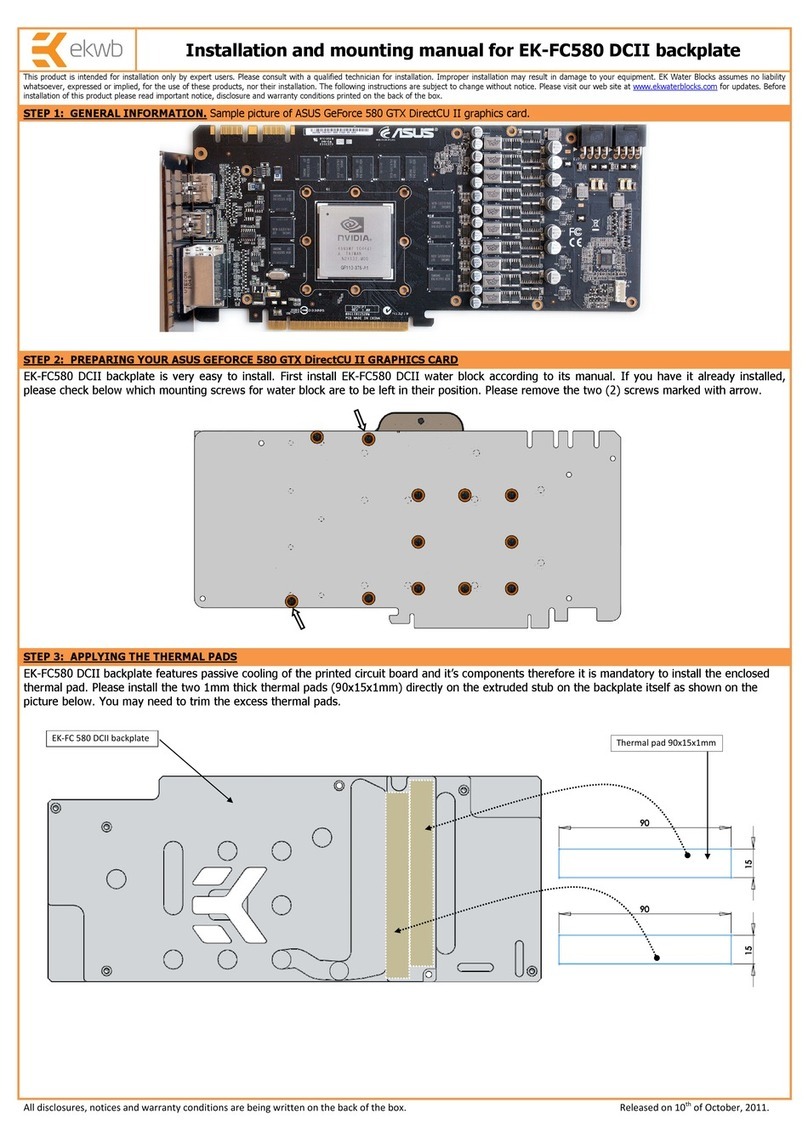
ekwb
ekwb EK-FC580 DCII Installation and mounting manuals

Hama
Hama HDD Silenser Bedienungsanleitung

ekwb
ekwb EK-FCW8100 Installation and mounting manuals
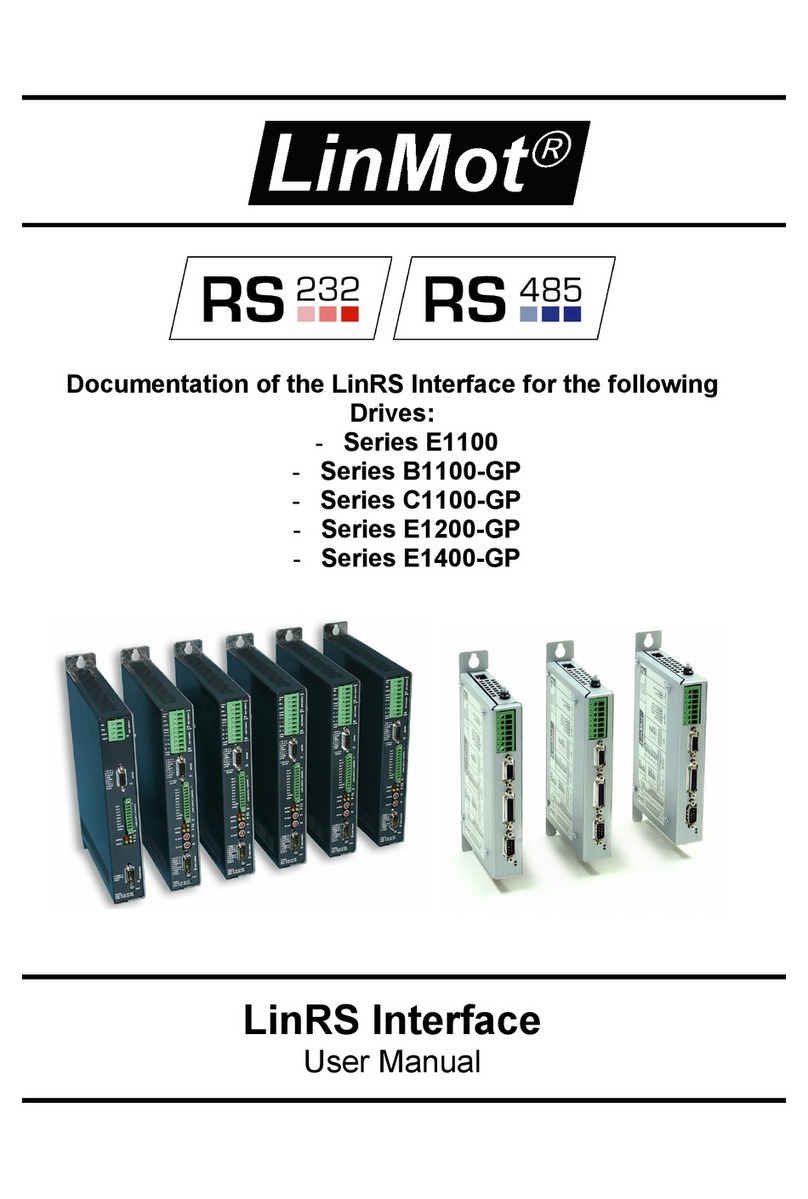
LinMot
LinMot E1100 Series user manual
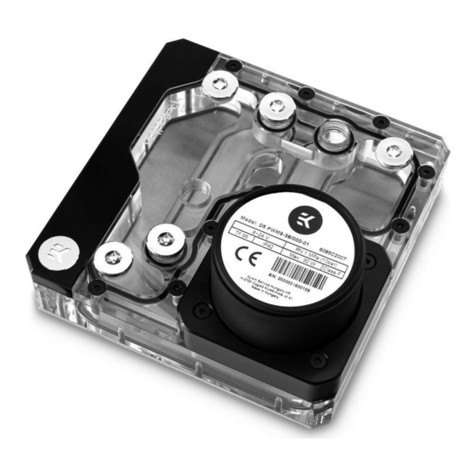
ekwb
ekwb EK-Quantum Reflection Uni 140 D5 PWM D-RGB user guide

POWERCOLOR
POWERCOLOR RX 7900 XT Series Quick installation guide
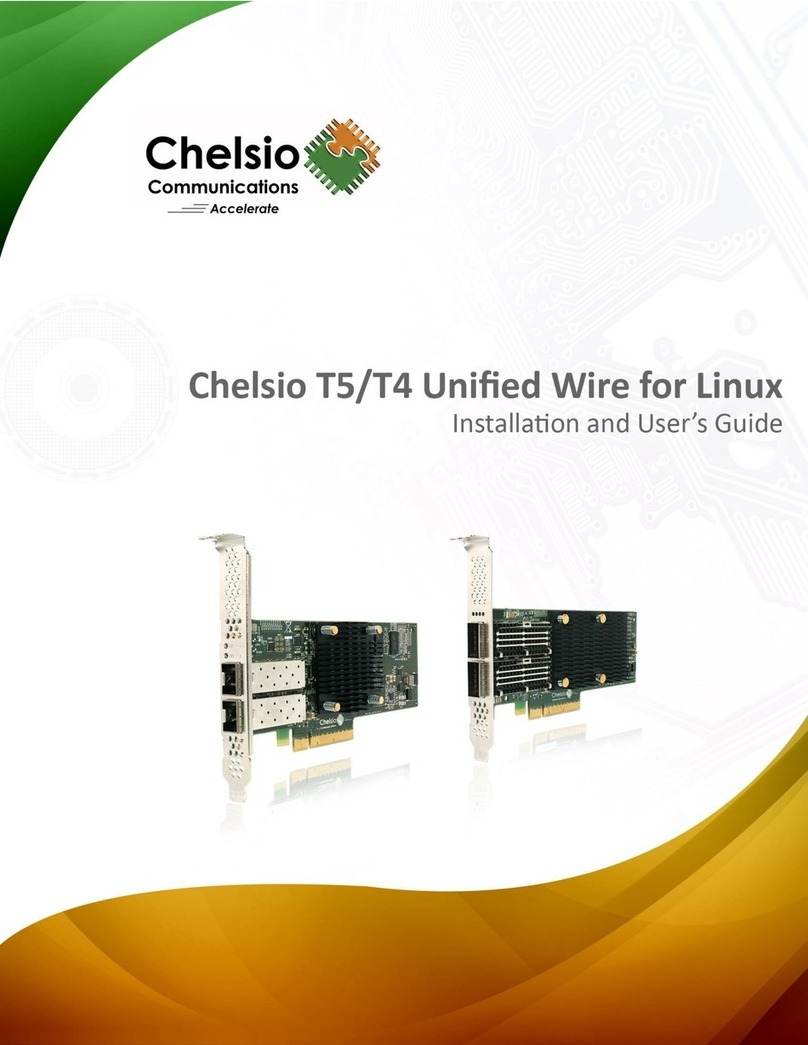
Chelsio Communications
Chelsio Communications Chelsio T5 Installation and user guide
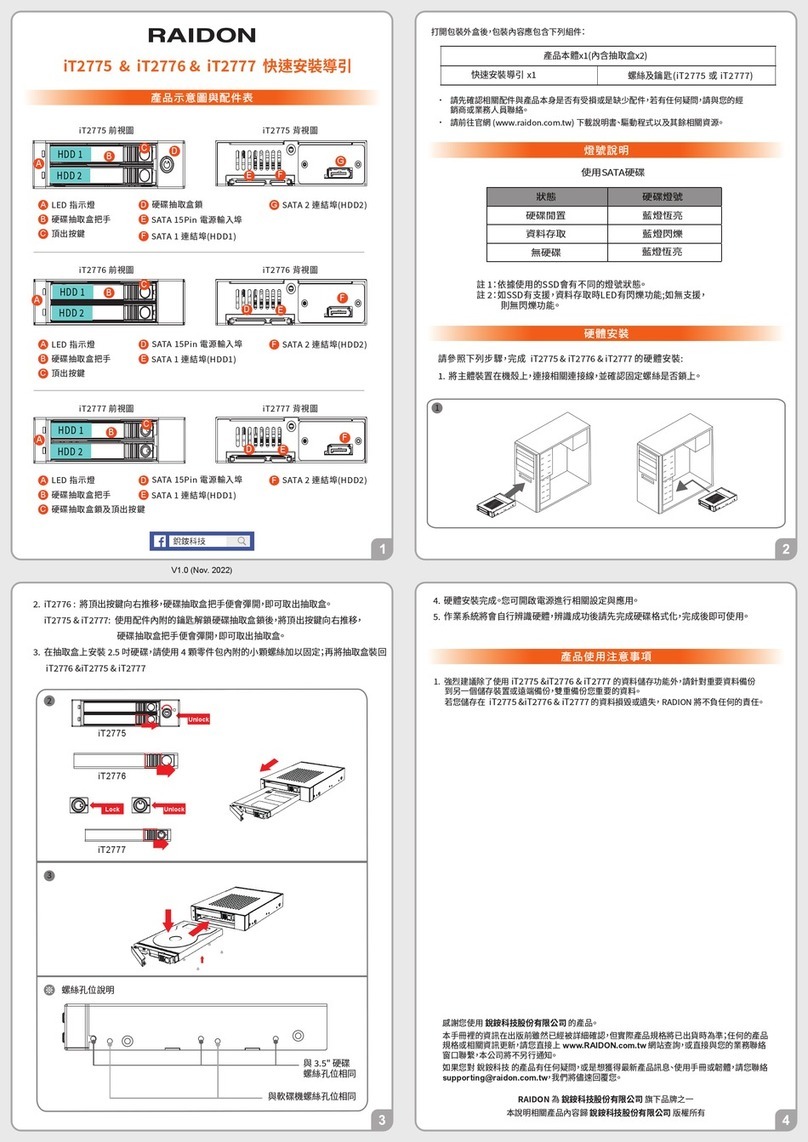
Raidon
Raidon iT2775 Quick installation guide
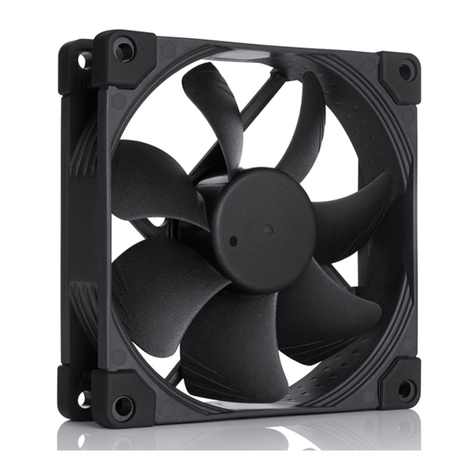
Noctua
Noctua NF-A9 PWM user manual
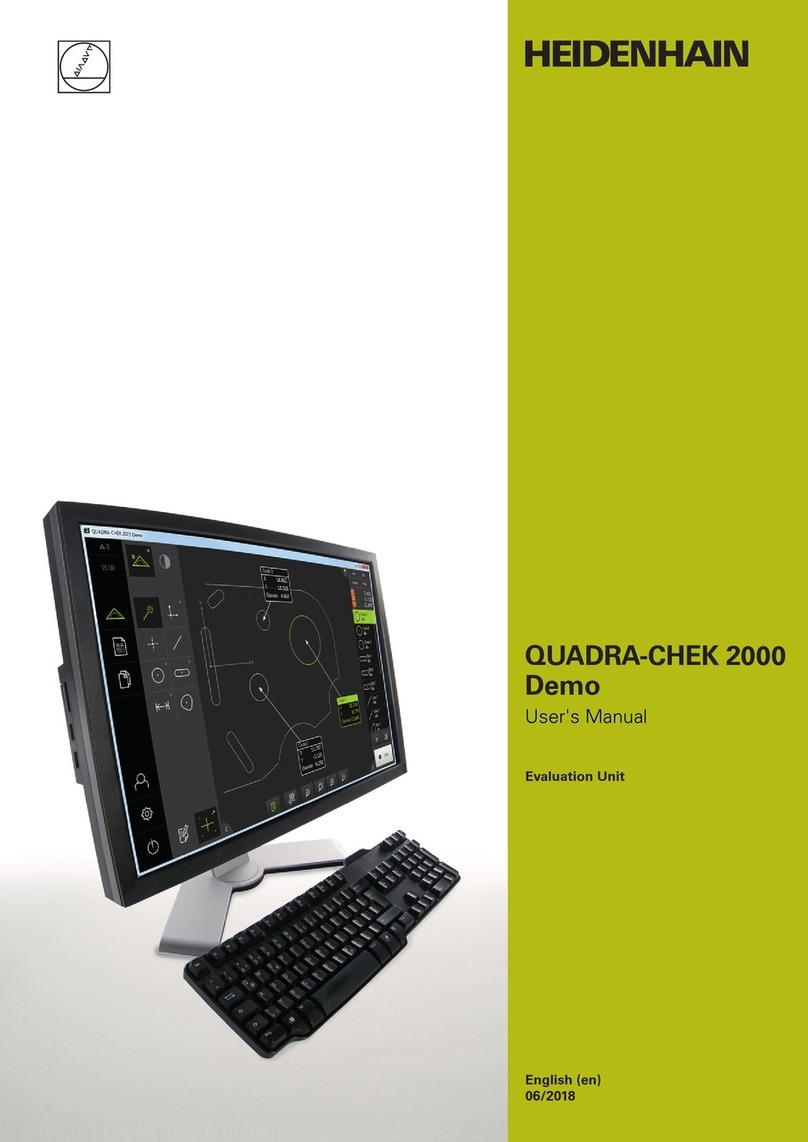
HEIDENHAIN
HEIDENHAIN QUADRA-CHEK 2000 Demo user manual

SPL
SPL Charisma 9527 owner's manual


